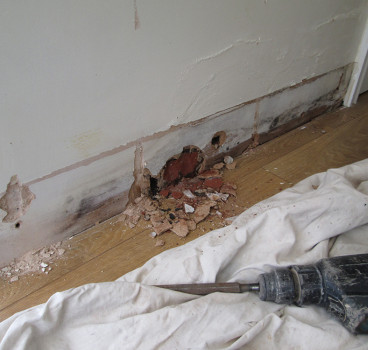Mixed-gender toilets deliver same positive results in UK schools
The introduction of unisex toilets in UK primary and secondary schools remains a contentious issue, particularly for some parents, but there seems little doubt mixed-gender washrooms will soon be accepted as the norm.
There is no official record of the number of mixed-used toilets installed throughout UK schools since the first facility was built at Bramhall High School, Stockport in 2000. Deemed controversial at the time - government officials had tried to rule the scheme illegal - official research found the facility reduced bullying and made pupils feel safer. Such was its success, the Department for Education and Skills issued guidance encouraging all new schools to feature unisex toilets.
According to research, mixed-gender toilets dissuade students from loitering in the area, behaviour that encourages instances of bullying and antisocial acts. This is due to youngsters becoming more sensitive about their appearance as they approach their teens, making them less likely to present a less-than flattering image of themselves in public areas.
Resistance to mixed facilities continues, however. Last year, a 700-signature petition was drawn-up by parents protesting at the planned installation of unisex toilets at Buxton School in east London. The scheme went ahead, but parents argued the shared toilets would ‘rapidly sexualise their children', as well as disrupting their ‘hygiene, privacy, safety, security and wellbeing'. In backing the scheme, the school's headteacher, Kath Wheeler, said the toilets provided a ‘safe space where pupils respect each other' and were in keeping with Department for Education and local council regulations.
Typically, unisex toilets comprise full-enclosed cubicles that open into a public washbasin area. In separate-gender areas, partially-enclosed cubicles in a closed-off space are the norm, creating an ‘intimidating space' for some. In contrast, mixed-use areas are designed to encourage a more open and welcoming sanitary environment. As such, some schools have taken to installing windows in washrooms that overlook corridors to enable staff to quickly spot instances of bullying or antisocial behaviour. Staff intervention when such issues arise is made easier with access to a mixed-gender toilet, compared to the potential discomfort of entering a toilet of the opposite ***.
Whilst the idea of our children sharing toilet facilities will never sit comfortably with some, there is enough evidence to suggest we should trust authorities which embark on such schemes, that the unisex option will serve the wellbeing of school and student alike.
Additional Blogs

Why most BIM Models are not actually that useful
For more than a decade, Building Information Modelling has been celebrated as the future of coordinated design, efficient delivery and data-driven asset management. In theory, BIM promises seamless...
Read moreHow construction can cut Its carbon footprint by caring for soil
Soil is often dismissed as mere dirt, but it is one of the planet’s most powerful carbon stores, holding more than all of the world’s forests combined. Yet in our rush to build, pave and develop, we...
Read more

What is bridging damp? How it happens and how to fix it
Bridging damp happens when moisture finds a path around the building’s damp-proof course (DPC) so it reaches your internal walls and skirting. If you see damp patches rising above the skirting or...
Read more